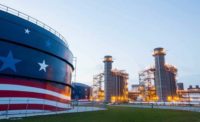Although Florida’s sunshine has lured new residents for decades, harnessing that resource to power homes and businesses is a relatively recent phenomenon. The Sunshine State ranks 12th in installed solar capacity, according to the Solar Energy Industries Association, with its 684 MW of sun-sourced generating capacity contributing a mere 0.22% of the state’s electricity supply.
That’s a statistic NextEra Energy and subsidiary FPL Group—ENR Southeast’s Owner of the Year—seems determined to change.
Touting itself as one of the nation’s leading clean energy utilities, with nearly 46 GW of generating capacity across its portfolio of natural, renewable and nuclear power plants, NextEra has stepped up its development of solar and wind power facilities across the U.S. In 2016, the company’s NextEra Energy Resources subsidiary, already the nation’s largest wind energy provider, added approximately 2,500 MW of new wind and solar projects, potentially the largest one-year addition of that type to be made in North America by a single company. Among the newly commissioned projects was a 250-MW solar energy plant in Nevada. Both NextEra and FPL are based in Juno Beach, Fla.
Closer to home, NextEra’s other primary subsidiary, Florida Power & Light (FPL), has likewise been on a solar building binge to offset the gradual phase-out of older, expensive fossil fuel systems, including the recently announced closures of coal-fired plants in Jacksonville and Indiantown. And that rapid ramp-up of renewable electricity generation is reflected in this year’s Top Starts ranking. (See page 12 of this issue.)
FPL ended 2016 by activating three newly completed “community-scale” 74.5-MW solar power plants in Charlotte, Manatee and DeSoto counties, bringing FPL’s total solar generating capacity in Florida to 335 MW. The pace of solar power construction will accelerate throughout 2017. On March 1, the company announced a year-long, $900-million program to add eight more 74.5-MW solar energy centers in locations ranging from near Gainesville to the central Atlantic Coast.
Environmental groups have applauded the effort. In a press statement announcing FPL’s solar plans, Eric Draper, executive director of Audubon Florida, noted: “An additional eight new solar energy centers is a major step toward reducing carbon emissions and saving water, benefiting the earth and all Floridians.”
Despite the substantial investment in new facilities, NextEra has sought to preserve FPL’s reputation for providing customers with reliable power at rates as much as 30% below the U.S. average. The company claims that the three solar energy centers it completed in 2016 used cost-effective designs that allowed for on-time, on-budget completion. Even though solar energy technology has become more affordable, the plants are not inexpensive. Although FPL has not disclosed specific project costs, estimates for the newly commissioned 440-acre facility at the Babock Ranch sustainable community begin at $300 million. Yet FPL insists that solar power construction costs are offset by reductions in fossil fuel use and long-term maintenance savings.
More affordable technology has likewise helped FPL undertake smaller-scale projects in more urban areas. In 2016, the company constructed a commercial-scale 1.4-MW solar array at Florida International University’s College of Engineering and Computing in Miami. In addition to supporting energy research at the school, the canopy supporting the 4,400 photovoltaic panels provide shade for approximately 400 parking spaces. Other FPL-built small-scale arrays can be found at more than 100 other Florida schools.
While the combined affordability and adaptability of solar energy offers a bright future for NextEra and FPL’s renewable strategy, the company has not forsaken growth opportunities in more conventional energy markets. A 1.7-GW natural gas generating facility currently under construction in northeast Okeechobee County is expected to begin operation in 2019. And a NextEra subsidiary is set to begin construction this spring of the $550-million Florida Southeast Connection, a 126-mile natural gas pipeline that will interconnect with two existing systems in central Florida and a new interstate network.
NextEra also maintains eight nuclear power units at five U.S. sites, including FPL’s Turkey Point Generating Station near Homestead. Concerns about leaks from that facility’s existing reactor cooling canals into Biscayne Bay have forced the utility to shelve plans to add two next-generation reactor units for at least four years.
Although renewable energy’s place in the nation’s energy infrastructure is uncertain, and more than a little controversial, NextEra’s strategy nevertheless has gained high regard from its peers. In early 2017, Fortune magazine’s annual ranking of the “World’s Most Admired Companies” placed NextEra atop the electric and gas utilities industry for the 10th time in 11 years. NextEra was also ranked among the top 10 companies worldwide across all industries for innovation, social responsibility and wise use of corporate assets.
To be sure, NextEra’s future is not without some potential clouds. Chairman James L. Robo admitted to shareholders in January that the company’s stock has underperformed in the weeks following the November election, given concerns about a potential rollback of federal energy policies that have helped fuel the renewable market’s growth in recent years.
Nevertheless, Robo remains optimistic about NextEra’s long-term prospects. He cited several advantages such as the momentum renewable energy projects have gained thanks to their operational efficiency and environmental benefits; the economic stimulus the company’s solar power centers provide to rural areas; and the fact that nearly two thirds of their components are U.S.-made.
“I wouldn’t trade our opportunity set with anyone in the industry,” he says.
|




Post a comment to this article
Report Abusive Comment